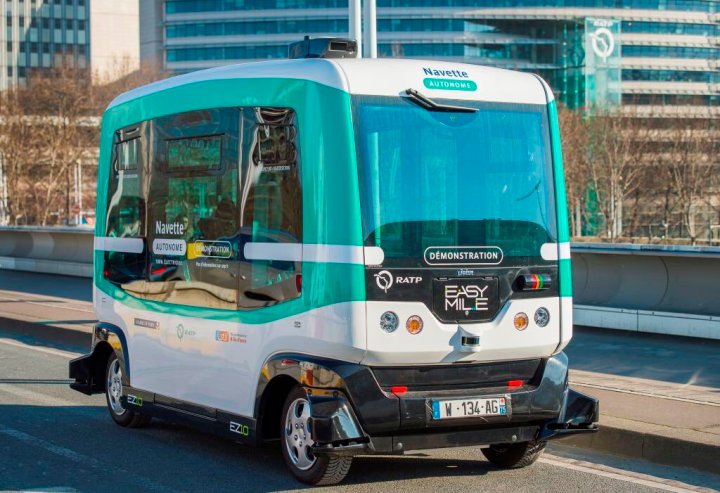
The latest metropolis to welcome such technology to its streets is Paris, a place whose ongoing struggle with smog has prompted it to look ever more closely at electric-operated public transportation solutions. And autonomous ones, at that.
It’s admittedly a tentative start, with only two “EZ10” buses trundling along a designated lane connecting Lyon and Austerlitz stations in central Paris – a distance of just over half a mile (1 km). However, the three-month trial, which started on Monday and offers free rides seven days a week, will be expanded to other locations in the French capital later this year.
“Autonomous vehicles represent a revolution for every city on the planet [that] will change our urban environment and public space in a spectacular fashion over the next 20 years,” Jean-Louis Missika, the city’s deputy mayor, told AFP.
Easy Mile
Built by French firm EasyMile, the small EZ10 vehicle can hold up to 12 people, and uses cameras, lasers, and GPS to get around. With a top speed of only 12 mph (20 kmh), the bus is better suited for short trips between facilities within particular locations, such as airports, shopping malls, and amusement parks. Indeed, EasyMile itself describes the EZ10 as ideal for covering “short distances and predefined routes in multi-use environments.”
Driverless bus technology is gaining recognition in cities around the world. EasyMile’s technology, for example, has also come to the attention of officials in Helsinki, Finland, and another trial using the EZ10 is set to begin soon in Darwin, Australia.
Another French company, Navya, recently introduced its diminutive self-driving shuttle bus to the streets of Las Vegas, while Singapore and China have been experimenting with designs a whole lot bigger.


